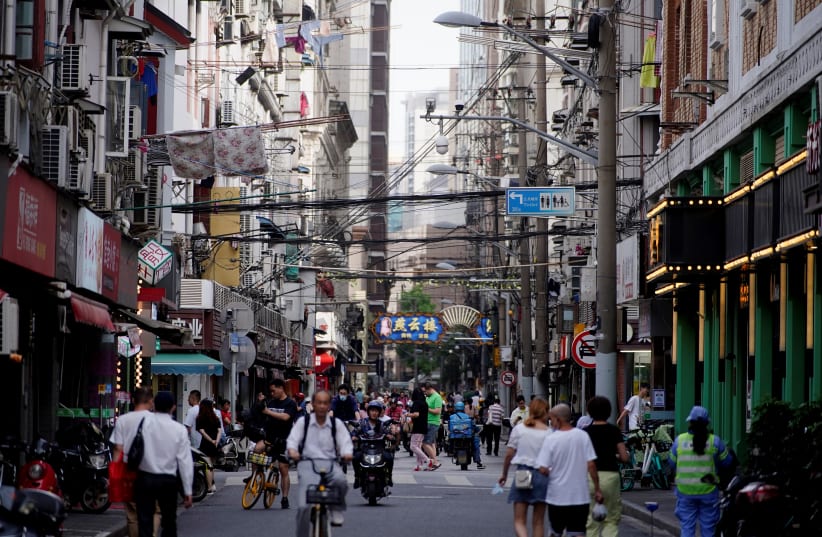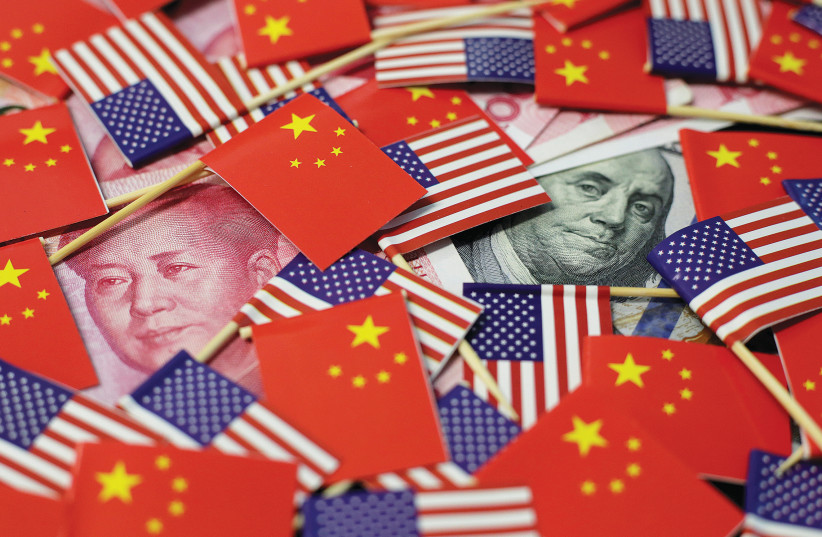A report this week said that China’s population declined last year for the first time since a brief decline in the 1960s. The reports on this decline have many seeing a “bleak” future for the world's most populous country and also a “demographic crisis," according to some of the headlines reporting the major shift.
On the one hand, China’s declining birthrate and aging population can be seen as part of a global trend. Many wealthy industrialized countries have low birth rates and many countries are seeing a possible decline in population in the long term. However, China’s changes have more implications for the world than those in Japan, Italy or other countries, because of its huge size and the way the world has been seeing China’s rise over the last decades.
First of all, what do the reports say?
NBC News noted that “China said Tuesday that its population declined last year for the first time in six decades, a historic shift with profound implications for the world’s second-largest economy.” This report said that “officials from the National Bureau of Statistics said mainland China had 1.41175 billion people at the end of 2022, compared with 1.41260 billion a year earlier, a decrease of 850,000. There were 9.56 million births — a record low birth rate of 6.77 per thousand — and 10.41 million deaths.”
Back in 2021, CNN noted that “China’s birthrate in 2020 has hit another record low – and there’s no indication things are about to pick up anytime soon.” That report went on to note that “there were only 8.5 births per 1,000 people in China last year, according to the latest yearbook released by the country’s National Bureau of Statistics in late November.”
The fact is that China’s birthrate decline is huge. According to the reports in 2021, there was an 18% decline in the number of babies born between 2019 and 2020.
Demographics and predictions are always problematic because people tend to project a trend into the future and then say that if this trend continues, then “X” will happen. But people are not simple data points; sometimes birth rates increase or decrease. Nevertheless, the population in China is aging, as it is in Russia and other places.
For instance, reports in 2022 said that Russia’s population was in historic decline. This is despite the fact that Russia’s leader has sought to portray his country as some kind of strong representation of Christian European civilization supposedly combating the “woke” ideologies of the West.
China is not like Russia
Most experts can see that Russia’s population is aging and declining and that economically, Moscow is not that important. But China is different: It is important and it is becoming more assertive. However, its one-child policy and other policies, such as zero-COVID, have come and gone. The leadership seems to know that they have mishandled things.
As the population ages, the country trends toward continuing to have one child for each two adults, even though the policy was ditched.
This is said to be due to the new middle class that wants to invest in one child to succeed and sees affording kids as difficult. This is the middle-class privileged paradox that has already taken place in the West where having numerous children is seen as a burden and pathway to poverty. But what happens when a country like China, which had an expanding economy, suddenly has a decline?
China was projected to continue expanding. The economic power of China was supposedly going to dominate the world. But the pandemic has given many countries pause. Now companies are slowly moving to manufacture elsewhere. They may be moving it to Vietnam or Malaysia or other countries, but the trend is clear: Many companies think they need to hedge their bets. China is no longer the be-all-end-all answer to everything.
Does this matter for the Middle East?
This matters for the Middle East as well.
Iran has trusted China as a future leader of the region and this caused Iran’s regime to put its eggs in the China and Russia basket, providing drones to Russia and hoping China will help Iran’s economy. The goal of Iran’s leadership was to ignore Russian sanctions. Beijing has also made inroads in other places in the Middle East. It has held important meetings in the Gulf recently, particularly with Saudi Arabia.
But many countries have gone through this dance with China, where they think that they can easily pivot to it away from the West and then find out that Beijing doesn’t actually offer everything it pretends to. China is simply not the answer that many countries thought it would be.
Now comes the hard times. As China faces demographic changes and as it may become less productive, it will need to seek stop-gap measures to ease the changes. For many years under Deng Xiaoping and later Jiang Zemin, China was seen to be reforming and opening up to the West when in reality it had as a motto the notion to “bide its time and hide its capabilities.” This was brought to fruition by Hu Jintao, who served as the general secretary of the Chinese Communist Party (CCP) from 2002 to 2012.
Under Xi Jinping, China has gone even further, asserting its power and no longer hiding or biding. This does not converge with the West as some hoped, testimony to the US-China Economic Review Commission in 2020 noted.
While China shifted to being to exert its power, it has met increasing challenges. Angered by Covid and now suspicious of Beijing, many Western countries are rallying together. This occurs in alliances and partnerships that span Australia, South Korea, Japan, the US, India, UK and other countries. It happens in different ways, from countries concerned about China’s technology to concerns about Chinese students, data issues or other types of spying and theft, concerns about debt and even about China and the WHO and UN. The US and the West are talking differently now – and so is China.
The West has its own problems
A recent CNN report noted that “the top 1% have captured nearly twice as much new wealth as the rest of the world during that period, according to Oxfam’s annual inequality report, released Sunday. Their fortune soared by $26 trillion, while the bottom 99% only saw their net worth rise by $16 trillion.”
New think tank war games reported on by Western media show how costly a struggle with China over Taiwan would be. The US is concerned about China’s rapid expansion of its navy. New weapons like lasers, drones and hypersonic missiles may change the future battlefield. Meanwhile, China is watching the West and Russia, and the fighting in Ukraine – and China is learning.
The demographic long-term crisis in China could lead the ruling party to take more risks.
If they think their long-term outlook of growth and power is slowing and that the West is now waking up, they may realize that time is running out and that a window of opportunity exists. Before the West can sufficiently re-arm – and while China has a young generation of nationalists thirsty for more power – perhaps the new data could cause policies that lead to destabilization in the world. This is the unintended consequence of the new reports.

